Cultivation and Propagation of Cymbidium how to raise it
Cold orchid is slender and graceful, elegant and handsome, beautiful and changeable in color and fragrance for a long time. The plant type of Han orchid is very similar to that of Jianlan, but the leaves are thinner, especially at the base, and the leaf posture is chic and elegant. The following editor will introduce to you how to cultivate and breed cold orchids.
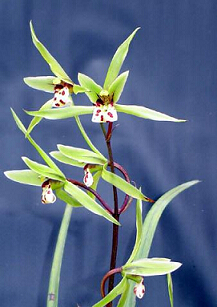
A brief introduction to Han Lan
Cold orchid leaves than the four seasons orchid slender, especially the leaf base is thinner, the leaf posture is elegant and unrestrained, green and beautiful, there are large, medium, thin leaves and edge and other varieties. Cold orchid flowers are rich in color, there are yellow, green, purple, dark purple and other colors, there are generally miscellaneous veins and spots, but also clean and flawless flowers. Sepals and holding petals are narrow, unique style, elegant and lovely, aroma.
Cultivation and Propagation of Cymbidium
First, choose the planting material. Whether the plant material is suitable for the characteristics of orchids and whether it is conducive to the normal growth of orchids is the key to raising orchids well. We have tried pond cornerstone, gold plant stone, clay, immortal soil, broken brick grain, and the mixture made of many kinds of plant materials. Through the cultivation contrast experiment, it is found that the cold orchid grows best when mixed with a certain amount of mountain mud (humus soil). Not only the root system is well developed, but also the seedling rate and flowering rate are higher than those of other plants. Therefore, it is concluded that the normal growth and flowering of cold orchid need a variety of comprehensive nutrients, and the nutrients which are difficult to meet the growth needs of cold orchid by various fertilization methods of soilless cultivation can be supplied from the mixed mountain mud, so it grows better. It is recommended that the plant formula which is more suitable for the cultivation of cold orchid is proved by comparative experiments for several years: pond cornerstone or gold plant stone (can also be replaced by other hard plant or river sand) 40%, mountain mud (preferably black humus soil in the original place of orchids) 35%, mushroom bran or waste sawdust planted with edible fungi (sun exposure or disinfection) 15%, snake wood (or fern root instead) 10%.
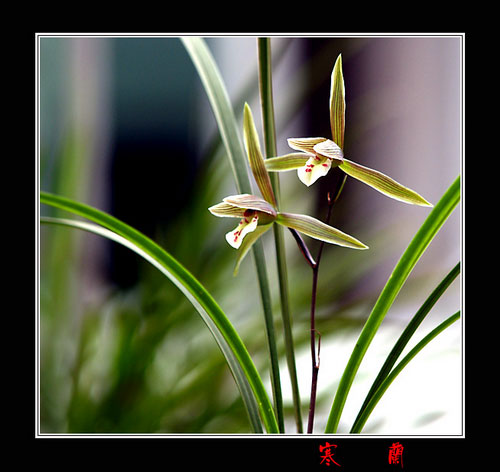
Second, reasonable shading. The native land of Hanlan is densely wooded, with tall trees to protect them from the sun and shade. Therefore, planting cold orchids should also artificially create suitable lighting conditions for them. Excessive light can easily cause sunburn of leaves. Excessive shading or long-term indoor exposure will affect the photosynthesis of orchids, resulting in poor growth and not easy to blossom. According to practice, the sunshade net with a layer of about 70% (fixed) in winter and spring and another layer of about 50% (movable) on sunny days in summer and autumn is most suitable for the growth of cold orchids (not covered in cloudy and rainy days). In short, under the premise of ensuring that the orchid leaves will not be burned, there should be more sunlight, especially the morning light before 9 am is very beneficial to the growth and flowering of orchids.
Third, control watering. Strict control of watering, usually try to make the basin soil moist but not wet, slightly dry but not dry is the key to raise cold orchids. Many novice orchids are afraid that orchids are short of water, so they water them whenever they are free, resulting in wet soil and rotten roots of orchids, which is the main reason for the failure of orchids for most novice orchids. The culture soil prepared with the above ratio is used to plant cold orchids, regardless of whether they are large or small, they are usually watered every 15 days in late spring, every 6 days in sunny days in summer, and once every 10 days in autumn. In winter and early spring, they are often not watered for more than 20 days or even more than a month. In order to facilitate the relatively unified management of large and small pots, reasonable pots were used according to the number of seedlings and the developed degree of roots, that is, more seedlings were planted in large pots, fewer seedlings were planted in small pots, large pots were used for developed roots, and small pots were used for root differences. Strong seedlings with weak seedlings can also be used, and rare and famous products can be planted with general varieties, which is not only in line with the habit of orchids, the accumulation of orchids is conducive to growth, but also basically achieve the same watering cycle of large and small pots. Pot soil to see dry and wet, that is, watering thoroughly, usually slightly dry as the principle, so that the cold orchid root system is developed, robust growth, rarely rotten root and root premature senescence phenomenon.
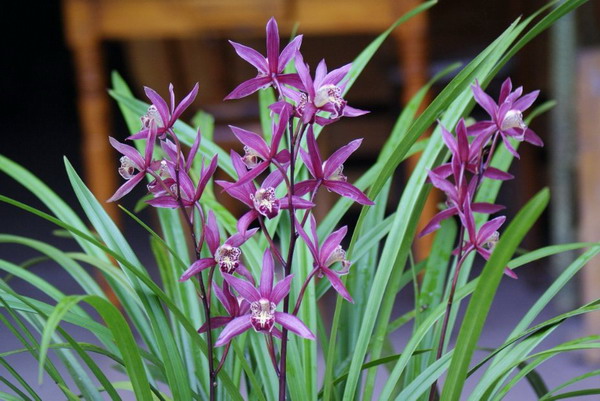
Fourth, keep the humidity. Han Lan likes the growing environment where the soil is slightly dry and the air humidity is high. Therefore, planting cold orchids should artificially create 55% Mur75% during the day and not less than 80% relative humidity at night. Humidifier, automatic spray, hanging water curtain, ground sprinkling, and other measures can be adopted, such as setting up pools or basins to humidify. The air humidity is high, the cold orchid leaves are bright and green, grow well, and it is easy to raise the first-class seedlings with full sealing tip. But when the humidity is high, remember to keep ventilated regularly.
Fifth, strictly prevent pollution. Cold orchid leaves are long and thin, many stomata, and large contact surface with air, so there is a special need for fresh air, pollution-free growth environment. Cold Orchid Garden should avoid nearby factories and workshops that emit thick smoke and produce a lot of dust. Family cultivation should be kept away from smoke windows, range hood and air conditioners as far as possible, and clean water with no pollution and moderate pH should be selected at the same time. In other words, people who feel fresh air, no smoke, less dust, no smell, well-ventilated environment are suitable for orchid cultivation. All drinking water can be used to water orchids. In addition, smoking in the orchid room should be avoided as far as possible.
Sixth, apply fertilizer scientifically. Most cold orchids consume more nutrients because of their relatively small pseudobulbs, limited nutrient storage, easy flowering and high scape flowers. Therefore, the cultivation of cold orchid ripe grass strong seedlings, it is best to add a small amount of base fertilizer when changing pots. It was found that about 1% of pig manure sterilized by ripening fermentation was most beneficial to the growth and flowering of cold orchid. However, fresh grass just down the mountain, newly purchased grass after long-distance trafficking or mail and weak seedlings with incomplete roots must not be in a hurry to fertilize, otherwise they will suffer fertilizer damage. In addition, potassium dihydrogen phosphate and blue fungus king were used alternately for foliar fertilization, once every seven to ten days, appropriate amount of urea could be added in the new bud growth stage, and high potassium fertilizer was sprayed two or three times during the new seedling maturity to make the pseudobulb enlarged. In order to make all kinds of nutrients more balanced, dilute organic fertilizer can be applied once a month from April to June and September to October, but it should be kept in mind that it is better to be light than thick to prevent fertilizer damage.
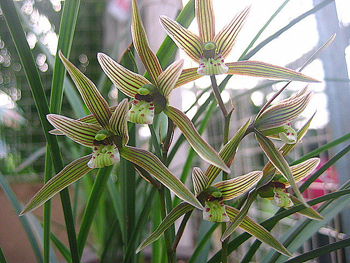
7. Prevent insects and diseases. To do a good job in the sanitation of Orchid Garden and thoroughly eliminate insects, sources of disease and sources of infection is the key to pest prevention and disease prevention. It is found that the diseased plants that are seriously harmful and easy to infect each other should be completely isolated or destroyed, and the diseased and dead leaves cut at ordinary times should be burned centrally. Secondly, the cultivation of cold orchid must be potted on the shelf, which is easier to manage than land planting, less pollution, fewer diseases and insect pests. The third is timely spraying, generally from March to May in spring and October to November in autumn is the peak period of diseases and insect pests. During this period, disease prevention and insecticides can be sprayed alternately from ten days to half a month, and once a month in the rest of the time. Thiophanate methyl, mancozeb, carbendazim, Kesha, Dakening and other fungicides can be used for disease prevention, and omethoate, quick culling, Jiejiejing and enemy killing can be used to kill insects.
8. Abstain from impatience. The cultivation of orchids is like the cultivation of nature, be patient, do not rush for quick success and instant benefits, and be too impatient. Some new orchid friends who are beginners to raise orchids lack the understanding and understanding of the growth characteristics and rules of orchids and are eager for success. Or indulge too much and water the orchids as soon as you have time. Today, peel open the soil to see if it has grown new roots, and tomorrow it will pour the pot and replace it with new plant materials, which will make the orchids half dead. How can they grow well? There are orchid friends in order to send more seedlings, the orchid plant is too single, the result is growing weaker and weaker, or even withered. What's more, some people are afraid that orchids are short of fertilizer and frequently apply all kinds of fertilizers to cause fertilizer damage. These practices all violate the growth law of orchids, that is, "look at flowers in one year, seedlings in two years, and pots in three years", that is, "the whole army will be destroyed" in a short period of time. Orchids understand human nature, you know her, love her, she will naturally sprout year after year, spit fragrance year after year, give you rich return. You can't be spoiled, spoiled or eager for success.
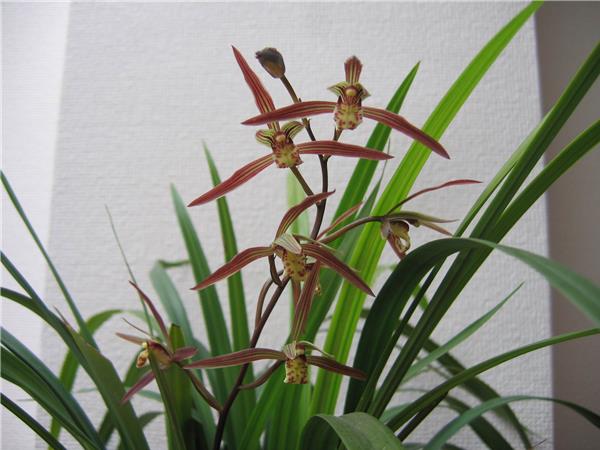
The above is about the cultivation of cold orchid breeding cold orchid how to raise the introduction, how, moved? Action is better than action.
Sixth, apply fertilizer scientifically. Most cold orchids consume more nutrients because of their relatively small pseudobulbs, limited nutrient storage, easy flowering and high scape flowers. Therefore, the cultivation of cold orchid ripe grass strong seedlings, it is best to add a small amount of base fertilizer when changing pots. It was found that about 1% of pig manure sterilized by ripening fermentation was most beneficial to the growth and flowering of cold orchid. However, fresh grass just down the mountain, newly purchased grass after long-distance trafficking or mail and weak seedlings with incomplete roots must not be in a hurry to fertilize, otherwise they will suffer fertilizer damage. In addition, potassium dihydrogen phosphate and blue fungus king were used alternately for foliar fertilization, once every seven to ten days, appropriate amount of urea could be added in the new bud growth stage, and high potassium fertilizer was sprayed two or three times during the new seedling maturity to make the pseudobulb enlarged. In order to make all kinds of nutrients more balanced, dilute organic fertilizer can be applied once a month from April to June and September to October, but it should be kept in mind that it is better to be light than thick to prevent fertilizer damage.

7. Prevent insects and diseases. To do a good job in the sanitation of Orchid Garden and thoroughly eliminate insects, sources of disease and sources of infection is the key to pest prevention and disease prevention. It is found that the diseased plants that are seriously harmful and easy to infect each other should be completely isolated or destroyed, and the diseased and dead leaves cut at ordinary times should be burned centrally. Secondly, the cultivation of cold orchid must be potted on the shelf, which is easier to manage than land planting, less pollution, fewer diseases and insect pests. The third is timely spraying, generally from March to May in spring and October to November in autumn is the peak period of diseases and insect pests. During this period, disease prevention and insecticides can be sprayed alternately from ten days to half a month, and once a month in the rest of the time. Thiophanate methyl, mancozeb, carbendazim, Kesha, Dakening and other fungicides can be used for disease prevention, and omethoate, quick culling, Jiejiejing and enemy killing can be used to kill insects.
8. Abstain from impatience. The cultivation of orchids is like the cultivation of nature, be patient, do not rush for quick success and instant benefits, and be too impatient. Some new orchid friends who are beginners to raise orchids lack the understanding and understanding of the growth characteristics and rules of orchids and are eager for success. Or indulge too much and water the orchids as soon as you have time. Today, peel open the soil to see if it has grown new roots, and tomorrow it will pour the pot and replace it with new plant materials, which will make the orchids half dead. How can they grow well? There are orchid friends in order to send more seedlings, the orchid plant is too single, the result is growing weaker and weaker, or even withered. What's more, some people are afraid that orchids are short of fertilizer and frequently apply all kinds of fertilizers to cause fertilizer damage. These practices all violate the growth law of orchids, that is, "look at flowers in one year, seedlings in two years, and pots in three years", that is, "the whole army will be destroyed" in a short period of time. Orchids understand human nature, you know her, love her, she will naturally sprout year after year, spit fragrance year after year, give you rich return. You can't be spoiled, spoiled or eager for success.

The above is about the cultivation of cold orchid breeding cold orchid how to raise the introduction, how, moved? Action is better than action.
Related
- Wuhan Hospital Iron Tree Blooming Result Was Instantly Frightened by the Gardener Master
- Which variety of camellia is the most fragrant and best? Which one do you like best?
- What is the small blue coat, the breeding methods and matters needing attention of the succulent plant
- Dormancy time and maintenance management of succulent plants during dormancy
- Minas succulent how to raise, Minas succulent plant pictures
- What are the varieties of winter succulent plants
- How to raise succulent plants in twelve rolls? let's take a look at some experience of breeding twelve rolls.
- Attention should be paid to water control for succulent plants during dormant period (winter and summer)
- Watering experience of twelve rolls of succulent plants
- Techniques for fertilizing succulent plants. An article will let you know how to fertilize succulent plants.



